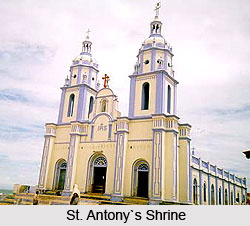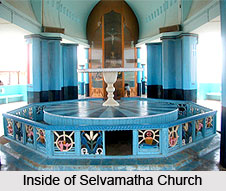 Uvari is located in Tirunelveli district in the state of Tamil Nadu in India. It is a coastal village located 45 km from Kanyakumari and 75 km from Tirunelveli. The village has a population of 10,000 and has almost 3,000 households.
Uvari is located in Tirunelveli district in the state of Tamil Nadu in India. It is a coastal village located 45 km from Kanyakumari and 75 km from Tirunelveli. The village has a population of 10,000 and has almost 3,000 households.
Economy of Uvari
The main source of income for Uvari is fishing. Some of them work as sailors. Uvari is a separate Panchayat village built beautifully. The village has four schools to fulfil the educational needs of the children residing there.
History and Religion of Uvari
As per the early Tamil history, people were known as Bharathar`s of the Neithal (ocean) land. The ancient name of Uvari was Obeer Pattanam. The rulers of the Pandya Dynasty ruled the region but later they were all converted by the Portuguese. In the 1530s, Bharathars were converted into Christianity by the Spanish and Portuguese missionaries from Goa. The Christians priests acted as godfathers and bestowed surnames like Fernando to the Roman Catholic Bharathars. The Bharathars were converted by the Portuguese.
Uvari is associated with a legend according to which almost 450 years ago a Portuguese ship carrying a group of crew members were affected with cholera. The ship`s carpenter to rescue them from dying made an image from a chunk of wood of Saint Antony of Padua. They all prayed to the Lord and soon all the crew members regained their health. The ship when reached Uvari, the crew members installed the idol in a village inside a hut. Later in the 1940`s a church was constructed by the villagers and installed the statue of St. Anthony on the altar.
 He is seen bearing in his hands the Infant Jesus. It is believed that the image of St Anthony had helped them in many ways through his miraculous powers. The name and fame of the church reached far and wide and it was later it was upgraded to a shrine. The church is visited by many Christians from different places of South India.
He is seen bearing in his hands the Infant Jesus. It is believed that the image of St Anthony had helped them in many ways through his miraculous powers. The name and fame of the church reached far and wide and it was later it was upgraded to a shrine. The church is visited by many Christians from different places of South India.
Besides this, another well known church of Uvari, the Kappal Matha Church also known as Our Lady of good health is located here. The church resembles a ship carrying an aeroplane. In the year 1974 the Kappal Matha Church was built to replace the original church of St. Mary. It was destroyed due to sea erosion. There are many grottos and four shrines here.
Pilgrimages Places in Uvari
Uvari is a famous pilgrimage centre visited by many people. Some of the important churches located here are St. Antony`s Shrine, Selvamatha Church (Our Lady of good wealth), St. Andrew`s Church and Velankanni Matha Church (Our Lady of good health). Among the coastal villages Uvari is regarded as one of the modern coastal towns.
To fulfil the educational needs of the town many schools have been established here like higher secondary school, a high school, an elementary school and a middle school. A hospital has also been built here that is maintained by the Nuna. Few people are also engaged in shipping.



















